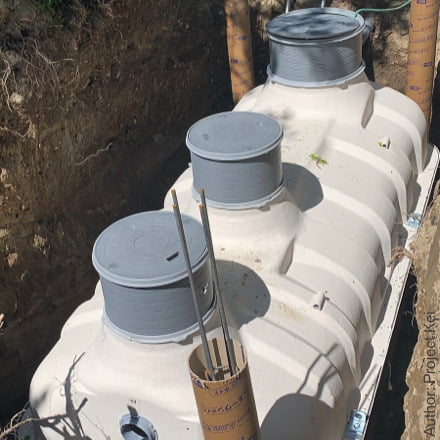The septic tank regulates the disposal of wastewater when the building is not connected to a sewer system. Here’s all the information you need to understand how it works.
The septic tank, also called septic tank, performs the normal functions of a sewer in all those areas where this infrastructure is not present. And therefore it is essential to have it and make a proper maintenance.
It is an underground and static pit in which black water (the sewage from the toilet, to be clear) and gray water (the water from the drains but not from the downpipes) are accumulated, so it is the liquid and solid waste produced by people, that is, only those coming from the bathroom and kitchen of a house and not the rainwater drains, without having to have purification operations.

Generally this is the solution adopted by those who live in the countryside or in very isolated areas, not reached by the system.
Septic tank: main features
The septic tank is a kind of tank or container usually made of concrete, equipped with a trap door at the top, necessary for its inspection and maintenance. There are two pipes, one of delivery, which receives the black and gray water and one of output, which brings the clarified water to the outside.
The tank is buried at least 1.20 meters deep and 1 meter away from the foundations of your home or building and should always be installed in the outdoor area and never directly under the house because in case of inspection to search for a clog, you will then have to split the entire floor of the house.
There are various types according to the construction materials. The most common are made of concrete, but they are also made of plastic (usually PVC) and fiberglass. The cheapest type is plastic.
There are two types of septic tanks: the traditional ones, which are connected to the public sewer system, and the ones called Imhoff, which are suitable for places far from other sewers.
Septic tank maintenance
The maintenance of the septic tank is essential for its durability and proper functioning. The first advice to follow is to absolutely avoid throwing cotton buds, plastic and unhygienic paper into the toilet. Not only do they clog the drains but they are deposited in the tank preventing it from working properly.
It is necessary to contact specialized companies for the emptying operation, which should be done at least once a year. A septic tank in good conditions can last up to 40 years.
The maintenance involves several stages: first the emptying, with the elimination of solid sludge through suction; the latter will then be poured to a purifier or an authorized landfill. Then follows the washing with the descaling, not only of the pit, but also of the various pipes.
These operations are fundamental because any dispersion could pollute waterways or aquifers.

BactSeptic BactPro 


